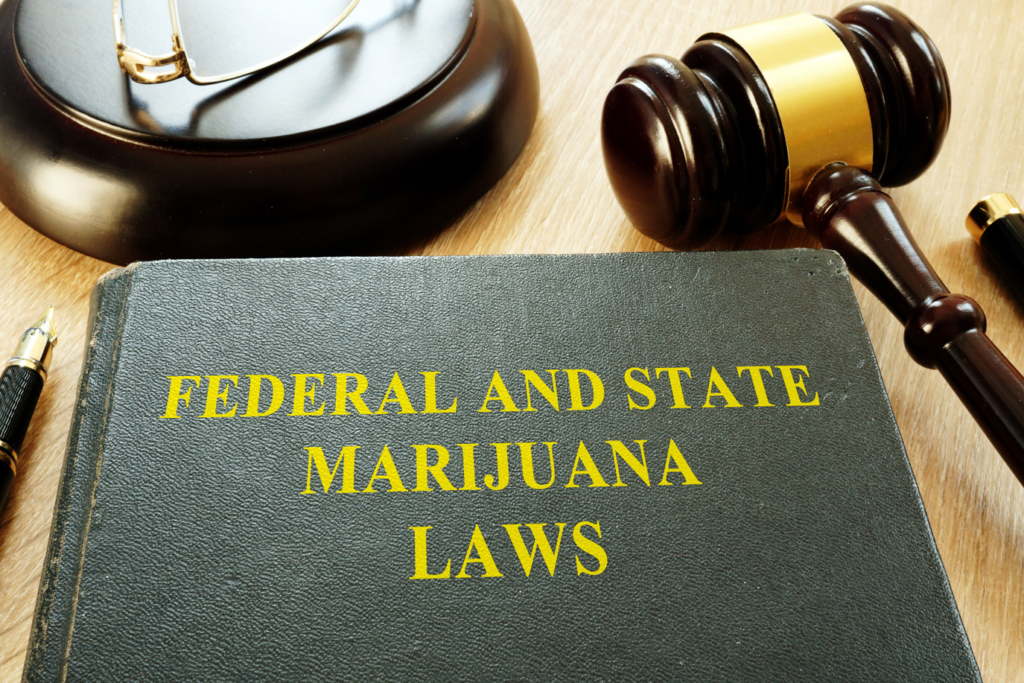Did you know cannabis is said to be one of the oldest cultivated plants by man? Its rich history spans thousands of years, a once sacred plant that has become one of the most controversial subjects of all time.
From its humble beginnings 28 million years ago on the eastern Tibetan Plateau to its domestication by man 12,000 years up to when it was outlawed almost a century ago, the history of cannabis is one of the most fascinating of any other plant on the planet.
Here we’ll take a deep dive into cannabis’ colorful history, looking at its early beginnings, significance in ancient cultures, the spread of cannabis cultivation throughout the world, why it was outlawed in the early 20th century, the revival of cannabis as a potential medicine, and the widespread legalization taking place today.
What You’ll Discover
- Cannabis evolved 28 million years ago, is suggested to be one of the first cultivated crops of man, and has been used by countless cultures throughout time for food, fiber, medicinal, recreational, and ritualistic practices.
- The prohibition and regulatory status of cannabis didn’t begin until 1937 with the Marihuana Tax Act that outlawed marijuana, ultimately leading to its classification as a Schedule I substance under the Controlled Substance Act of 1970.
- Over the past three decades, the legal landscape of cannabis has changed dramatically, and it’s now legal for medical use in 38 states and recreational use in 24 states, three US territories, and the District of Columbia.
An Introduction to the Ancient Beginnings of Cannabis

The roots of the cannabis plant can be traced back 28 million years ago, when it first evolved on the eastern Tibetan Plateau [1]. There’s evidence of human cannabis use for fiber during the Neolithic period (around 10,000 BC), and it’s believed the earliest use of cannabis as food dates back 10,000 years ago [2],[3].
The oldest evidence of cannabis used for its psychoactive properties dates back 2,500 years ago. In a 2019 study, researchers discovered cannabis plants were burned in wooden braziers during funeral ceremonies. When mourners burned the plant, it produced intoxicating fumes for their funerary practices [4].
This ancient ceremonial tradition marked the beginning of a global journey that transformed the cannabis plant from an ancient agricultural staple to a symbol of cultural, political, and medicinal significance.
Interestingly, the initial use of cannabis seems to have been associated with the elite members of society before becoming more widely used as it spread across Central Asia.
There’s also evidence to suggest that the cannabis used in ancient times contained high THC levels. The excavation of a tomb from 450 BC that was believed to be of a shaman contained 800g of cannabis rich in THC. This indicates the plant wasn’t just gathered from the wild, but cultivated by humans to contain high levels of THC [5].
The Spread of Cannabis Around the World
The global spread of cannabis was spurred by the cultural significance it held in ancient societies. From China, cannabis made its way to Korea around 2000 BC by coastal farmers. Soon after it made its way to the South Asian subcontinent between 2000 BC and 1000 BC with the movement of the Aryan people [6].
Cannabis use became widespread in India, where it was considered sacred. In the In the Atharva Veda, one of Hinduism’s four sacred texts, cannabis is named one of the five most sacred plants on Earth. The text also refers to it as a “source of happiness” and a “liberator” [7]
It moved to the Middle East between 2000 BC and 1400 BC, where it was believed to be used by the Scythians, who then introduced it to southeast Russia and Ukraine [8].
In the hundreds of years to follow, cannabis made its way around the world, moving through Africa, into South America in the 19th century before making its way to North America.
The Shift Towards Prohibition and Regulation
It was after the Mexican Revolution of 1910 when Mexican immigrants flooded into the US. Along with other parts of their culture, they brought the marijuana they used recreationally with them. Cannabis use soon became associated with these immigrants, and the prejudice and fear of them became associated with cannabis use [9].
During the economic struggles of the Great Depression, the fear and resentment of Mexican immigrants increased exponentially. So did public and governmental concerns about marijuana use. By 1931, marijuana was outlawed in 29 states [10].
Anti-drug campaigns in the 1930s were seeped in racial prejudice, linking marijuana use to violence and crime. The propaganda film “Reefer Madness,” produced in 1936, played a significant role in promoting the stigma against marijuana, showing users engaging in extreme antisocial and violent behaviors.
This ultimately led to the Marijuana Tax Act of 1937, which effectively marked the beginning of federal cannabis prohibition [11].
The Marihuana Tax Act and Federal Prohibition of Cannabis
 The Marihuana Tax Act of 1937 was a huge turning point in cannabis regulation. It imposed a tax on cannabis sales, which limited its accessibility [11].
The Marihuana Tax Act of 1937 was a huge turning point in cannabis regulation. It imposed a tax on cannabis sales, which limited its accessibility [11].
It included high taxes on cannabis, complex compliance requirements, occupational excise tax and transfer tax on marijuana dealings, and regulatory provisions for revenue protection. By implementing these measures, the Act effectively criminalized cannabis use for the general public.
The Boggs Act of 1952 and the Narcotics Control Act of 1956 established mandatory sentences for drug-related offenses, setting harsh punishments for marijuana with penalties reaching a minimum sentence of 2-10 years and fines up to $20,000 for first offenders [12].
How the Controlled Substances Act Changed Cannabis Regulations
Following the repeal of the Marihuana Tax Act, the federal government took measures to ensure cannabis remain illegal.
The Controlled Substances Act of 1970 replaced the Marihuana Tax Act, introducing a drug schedule system that classified marijuana as a Schedule I substance [13]. This is the most restrictive category reserved for drugs with a high potential for abuse and no accepted medical use.
When the Drug Enforcement Administration (DEA) was established in 1973, it enforced the regulations of the Controlled Substances Act on the possession and distribution of marijuana [14]. This led to federal penalties such as imprisonment and fines added to marijuana possession and distribution.
These policies continued to evolve, reflecting shifting drug use patterns and societal attitudes, but their impact on marijuana and those who use it remained profound.
Cannabis and The War on Drugs
The War on Drugs established during the Nixon era further intensified the war on marijuana. It was enacted to battle drug use and came with strict drug policies [15].
During this time, the Anti-Drug Abuse Act of 1986 was created, establishing mandatory minimum sentences for drug offenses, which led to severe sentences for marijuana trafficking and possession [16].
Propaganda campaigns like the “Just Say No” initiative created by Nancy Reagan during her husband’s presidency [17]. Public service announcements during this time created a stigma around marijuana use, portraying it as a gateway drug.
The Anti-Drug Abuse Act of 1986 raised federal penalties for marijuana possession and dealing, equating possession of 100 marijuana plants to that of 100 grams of heroin. This act also introduced the “three strikes and you’re out,” creating life sentences for repeat offenders.
Ultimately, these laws marked a huge escalation in the federal government’s war on drugs, with severe implications for those caught with cannabis.
The Anti-Drug Abuse Act of 1986 created a substantial increase in the federal prison population because of harsh mandatory minimum sentences for drug offenses, including marijuana. It also led to the United States having the world’s highest incarceration rate.
Racial disparities in marijuana law enforcement persist today, with black individuals 3.73 times more likely than white individuals to be arrested for marijuana possession [18].
Over the past decade, the racial disparity in marijuana possession arrests has persisted in many states, despite its increasing legality for recreational and medical use.
How Medical Marijuana Laws Changed the Course of Cannabis History

While the War on Drugs raged on, the medical marijuana scene started slowly growing. The 1996 Compassionate Use Act of California marked a monumental turning point for moment medical cannabis in the United States [19].
It allowed qualified patients to use medical marijuana for specific conditions with a physician’s consent, while increasing awareness of its medical potential.
Since California legalized medical marijuana, cannabis for medical use has been legalized in 40 states and the District of Columbia. This has slowly led to a shift in societal attitudes and perceptions regarding cannabis use, paving the way for more lenient laws, increased research, and wider accessibility of medical and recreational cannabis use.
At the time of writing, 24 states and the District of Columbia have legalized cannabis for recreational use. The journey to current cannabis legalization has been long, marked by a series of progressive developments at the state level.
Despite numerous studies that highlight the safety and potential benefits cannabis contains, it’s still classified as a Schedule I substance at the federal level. There are, however, efforts to decriminalize and potentially legalize cannabis federally.
This path to legalization has been complex and full of controversies, much like the history of cannabis itself. Commonly referred to as the “green wave,” the decriminalization and legalization of marijuana highlights a significant shift in US cannabis policy.
These slow, progressive steps reflect growing public support for marijuana legalization. In 2023, a record 70% of US adults support cannabis legalization. This is up from 68% from the three years prior. In 1969, only 12% of US adults were in favor of legal cannabis [20].
Today, public perception of marijuana legalization is generally positive, with the stoner stereotype attached to cannabis use steadily fading away. Interestingly, Boomers are one of the fastest growing segments of cannabis consumers. That said, acceptance varies among different age groups and political affiliations.
Wrapping Up
Cannabis is perhaps the most controversial plant in history, and it’s journey throughout time is a true testament to its unprecedented significance to mankind.
From its first appearance almost 30 billion years ago, to the ancient cultures that recognized its sacred significance in rituals and as medicine to being outlawed, then slowly reintroduced as a legitimate, legal substance, cannabis has remained a constant, intrigue throughout time.
As we stand at the crossroads of history, the future of cannabis is promising. Its medical potential is widely accepted and its societal stigma is slowly fading while its legal status is reconsidered entirely. As societal attitudes continue to evolve and more research is conducted, the history of cannabis continues to be written.
Frequently Asked Questions
How long have humans used cannabis?
The human use of cannabis dates back thousands of years to ancient times and is said to be one of the first cultivated crops of man.
When did smoking cannabis start?
Smoking cannabis dates as far back as 2500 years ago and it was introduced to American culture after the Mexican Revolution of 1910.
What led to the prohibition of cannabis in the United States?
The prohibition of cannabis in the United States was influenced by the arrival of Mexican immigrants using marijuana after the Mexican Revolution in 1910, which led to racial, social, and political backlash. Ultimately, this led to the Marijuana Tax Act of 1937. By 1970, marijuana was classified as a Schedule I substance.
[1] McPartland, J. M. (2018). CannabisSystematics at the Levels of Family, Genus, and Species. Cannabis and Cannabinoid Research, 3(1), 203–212. https://doi.org/10.1089/can.2018.0039
[2] Cannabis Chemistry and Biology. (2023). Google Books. https://books.google.com.eg/books?hl=en&lr=&id=dIS9EAAAQBAJ&oi=fnd&pg=PA1&dq=there%27s+evidence+of+human+cannabis+use+for+fiber+during+the+Neolithic+period+(around+10,000+BC),+and+it%27s+believed+the+earliest+use+of+cannabis+as+food+dates+back+10,000+years+ago.&ots=KgksR8vxjg&sig=Fyy8tmr6bRNZCFOY8SNaGyp1G3I&redir_esc=y#v=onepage&q&f=false
[3] Charitos, I. A., Gagliano-Candela, R., Santacroce, L., & Bottalico, L. (2021). The Cannabis Spread throughout the Continents and its Therapeutic Use in History. Endocrine, Metabolic & Immune Disorders, 21(3), 407–417. https://doi.org/10.2174/1871530320666200520095900
[4] Ren, M., Tang, Z., Wu, X., Spengler, R., Jiang, H., Yang, Y., & Boivin, N. (2019). The origins of cannabis smoking: Chemical residue evidence from the first millennium BCE in the Pamirs. Science Advances, 5(6). https://doi.org/10.1126/sciadv.aaw1391
[5] Freitas, H. (2022). Medical Cannabis – A Historical Perspective . https://doi.org/10.20944/preprints202204.0054.v1
[6] High Points: An Historical Geography of Cannabis*. (2014). Geographical Review. https://www.tandfonline.com/doi/full/10.1111/j.1931-0846.2014.12038.x?scroll=top&needAccess=true
[7] Ferrara, M. S. (2021). Peak-experience and the entheogenic use of cannabis in world religions. Journal of Psychedelic Studies, 4(3), 179–191. https://doi.org/10.1556/2054.2020.00122
[8] Merlin, M. D. (2003). COVER ARTICLE: Archaeological Evidence for the Tradition of Psychoactive Plant Use in the Old World. Economic Botany, 57(3), 295–323. https://doi.org/10.1663/0013-0001(2003)057[0295:aeftto]2.0.co;2
[9] Mexicans and the Origins of Marijuana Prohibition in the United States: A Reassessment: The Social History of Alcohol and Drugs: Vol 32. (2018). The Social History of Alcohol and Drugs. https://www.journals.uchicago.edu/doi/abs/10.1086/SHAD3201006
[10] Valdez, A., & Kaplan, C. D. (2019). Deconstructing US Marijuana Prohibition Policies in the Early Twentieth Century. Aztlán: A Journal of Chicano Studies, 44(1), 111–140. https://doi.org/10.1525/azt.2019.44.1.111
[11] Musto, D. F. (1972). The Marihuana Tax Act of 1937. Archives of General Psychiatry, 26(2), 101–101. https://doi.org/10.1001/archpsyc.1972.01750200005002
[12] McMahon, J. (2017). Marijuana History and Legal Aspects in the United States. Murray State’s Digital Commons. https://digitalcommons.murraystate.edu/bis437/96/
[13] Jean, T. (2023). Policy Analysis: A Case for Rescheduling Marijuana. Journal of Medicine and Public Health, 4(5), 1075. https://www.medtextpublications.com/open-access/policy-analysis-a-case-for-rescheduling-marijuana-1401.pdf
[14] Sacco, L. (2014). Drug Enforcement in the United States: History, Policy, and Trends. http://www.fredsakademiet.dk/ordbog/uord/drugs.pdf
[15] Farber, D. (2021). The War on Drugs. NYU Press. https://www.degruyter.com/document/doi/10.18574/nyu/9781479811397.003.0004/pdf?licenseType=restricted
[16] About | HeinOnline. (2021, March 8). HeinOnline. https://heinonline.org/HOL/LandingPage?handle=hein.journals/ohslj77&div=50&id=&page=
[17] President Reagan. (2024). Google Books. https://books.google.com.eg/books?hl=en&lr=&id=X_Y4DgAAQBAJ&oi=fnd&pg=PT7&dq=Propaganda+campaigns+like+the+%22Just+Say+No%22+initiative+created+by+Nancy+Reagan+during+her+husband%27s+presidency.&ots=cAuu-XUKaG&sig=wlK65Ql3u_YgWKi_11UV0IZyUf8&redir_esc=y#v=onepage&q&f=false
[18] Turner, C. (2023). The Relationship Between Marijuana Policy and Prejudice Regarding Adult Black Americans. University of New Hampshire Scholars’ Repository. https://scholars.unh.edu/perspectives/vol15/iss1/9/
[19] Fevery, A. K. (2024). Half Baked: The Federal and State Conflicts of Legalizing Medical Marijuana. Scholarship @ Claremont. https://scholarship.claremont.edu/cmc_theses/504/
[20] Mancini, C. (2024). Legalize It, Criticize It, or Something Else? Americans’ Attitudes Toward Federal Recreational Marijuana Legislation (RML) – Christina Mancini, Kristen M. Budd, 2024. Crime & Delinquency. https://journals.sagepub.com/doi/full/10.1177/00111287221118022?casa_token=ktcVOqZoVFkAAAAA%3Av5VjmPWfHiijnwjTnnPyUQUkCE-NrA3LrBLlGsRxHx0CzcWdEDYIxKFSd8JNA-0w5PVQq6boVEmkmis
